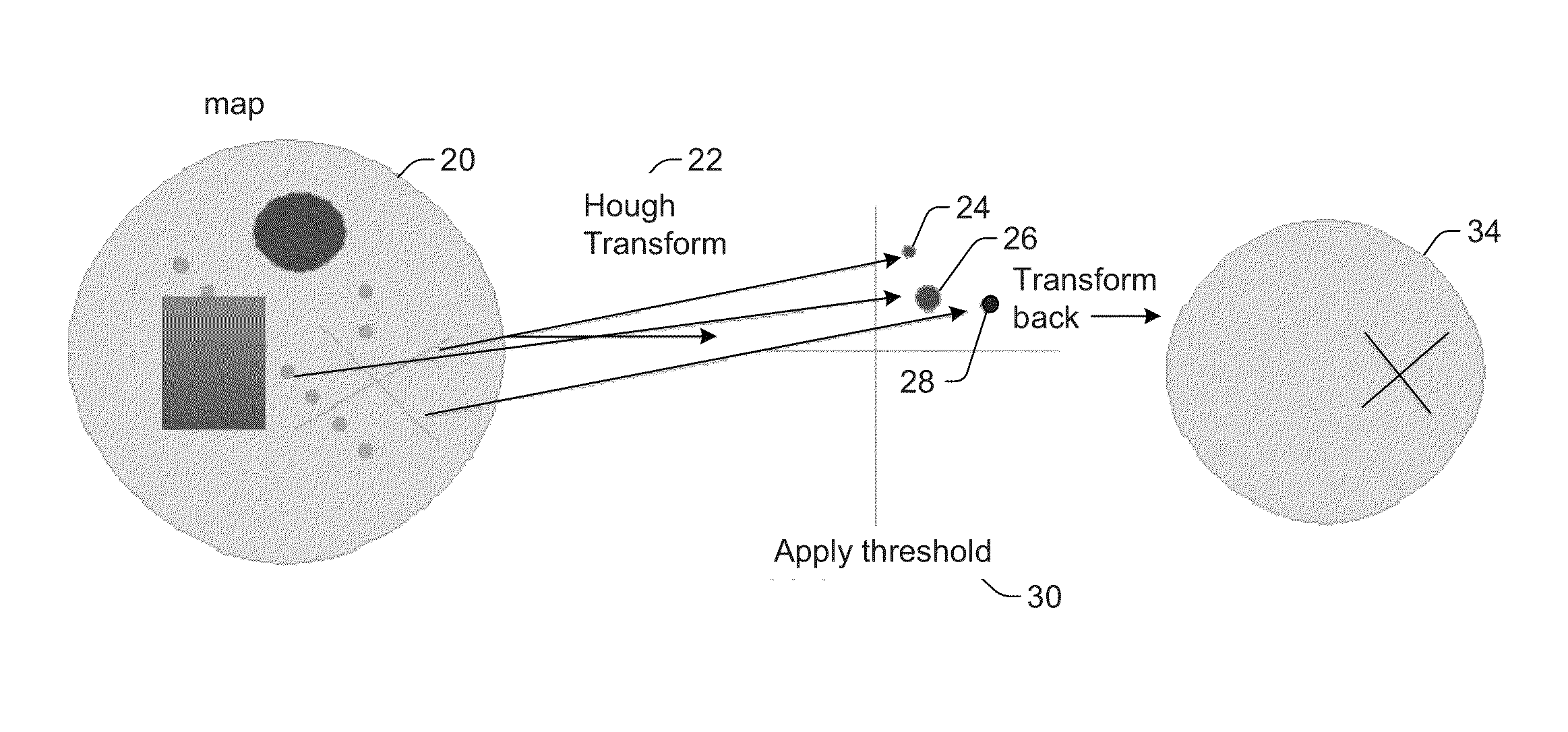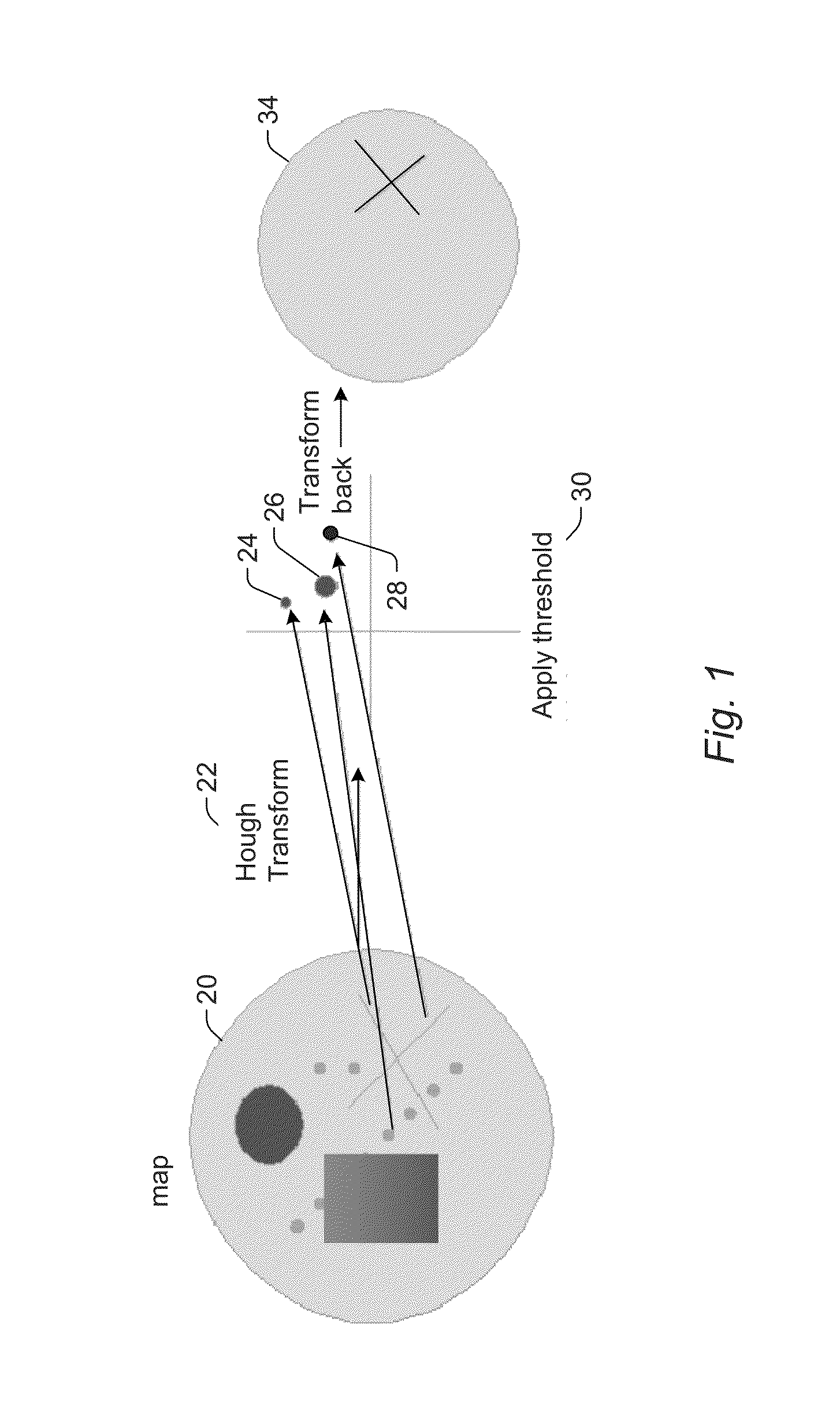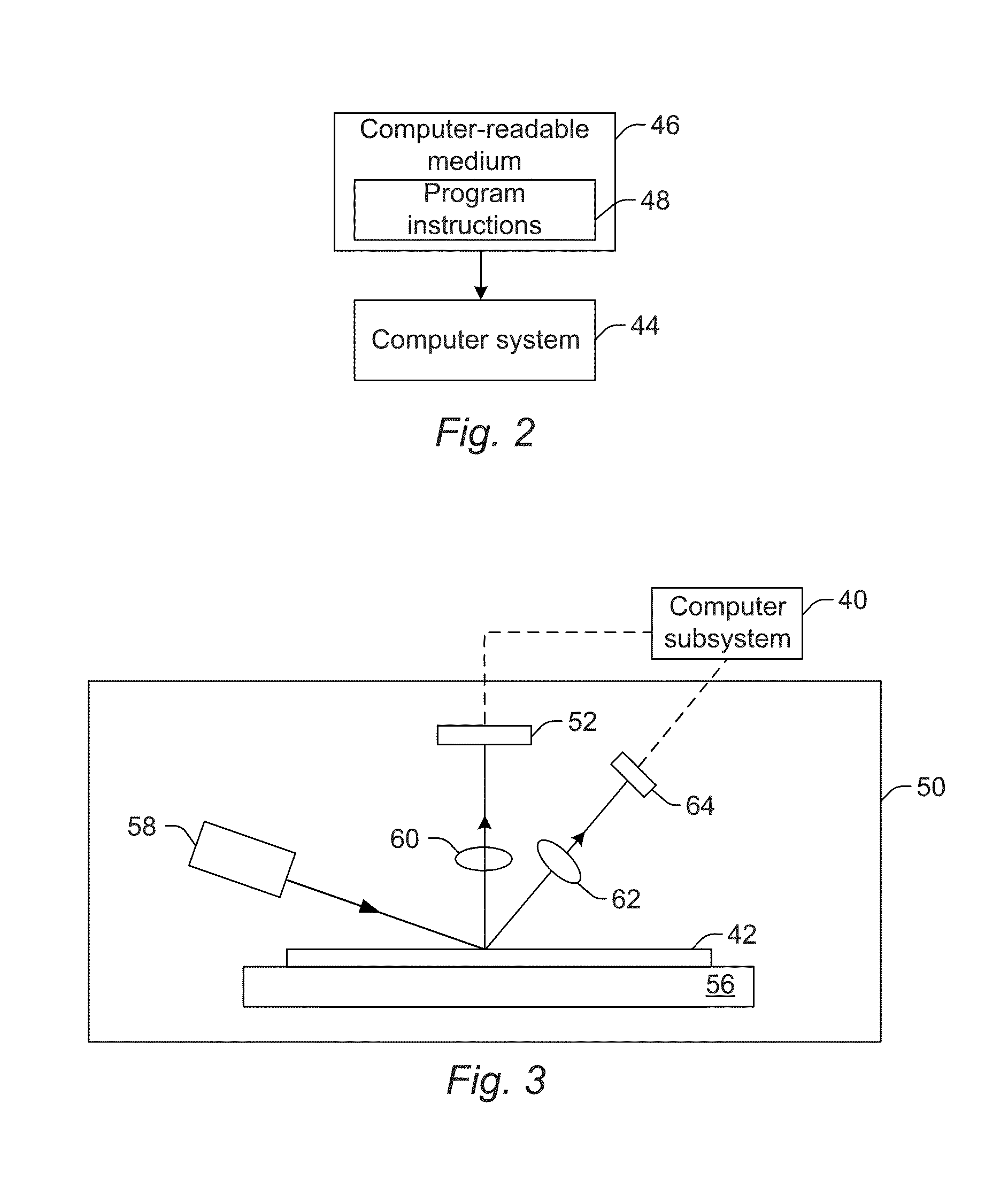Detection of selected defects in relatively noisy inspection data
- Summary
- Abstract
- Description
- Claims
- Application Information
AI Technical Summary
Benefits of technology
Problems solved by technology
Method used
Image
Examples
Embodiment Construction
[0021]Turning now to the drawings, it is noted that the figures are not drawn to scale. In particular, the scale of some of the elements of the figures is greatly exaggerated to emphasize characteristics of the elements. It is also noted that the figures are not drawn to the same scale. Elements shown in more than one figure that may be similarly configured have been indicated using the same reference numerals.
[0022]In general, the embodiments described herein relate to detecting two-dimensional defects on a substrate in relatively noisy inspection data. For example, one embodiment relates to a computer-implemented method for detecting defects on a substrate.
[0023]As used herein, the term “raw inspection data” generally refers to data acquired by inspection of a substrate that has not been processed to alter the signal-to-noise ratio of the data. For example, raw inspection data may be data that has been translated from one form to another (e.g., digitized or transformed from one sp...
PUM
 Login to View More
Login to View More Abstract
Description
Claims
Application Information
 Login to View More
Login to View More - R&D
- Intellectual Property
- Life Sciences
- Materials
- Tech Scout
- Unparalleled Data Quality
- Higher Quality Content
- 60% Fewer Hallucinations
Browse by: Latest US Patents, China's latest patents, Technical Efficacy Thesaurus, Application Domain, Technology Topic, Popular Technical Reports.
© 2025 PatSnap. All rights reserved.Legal|Privacy policy|Modern Slavery Act Transparency Statement|Sitemap|About US| Contact US: help@patsnap.com



